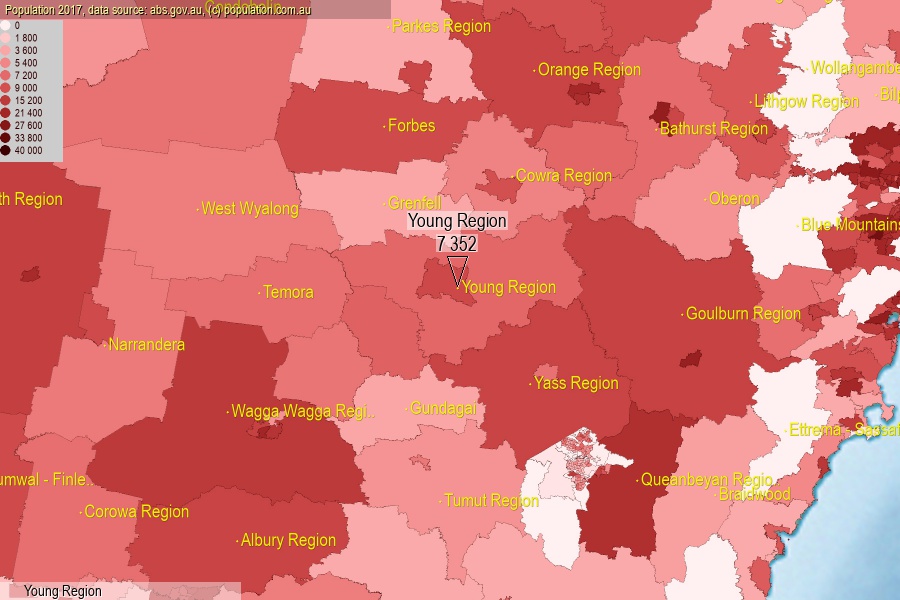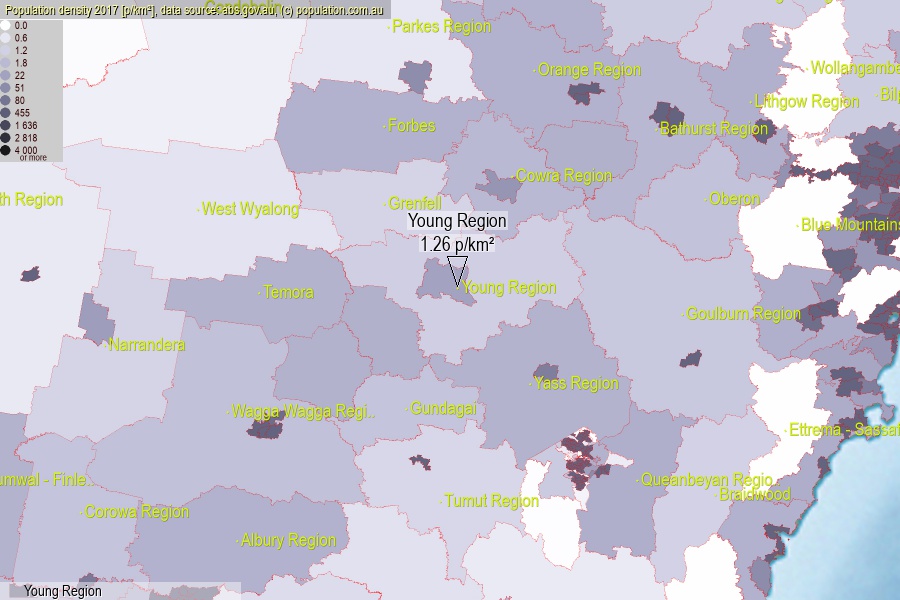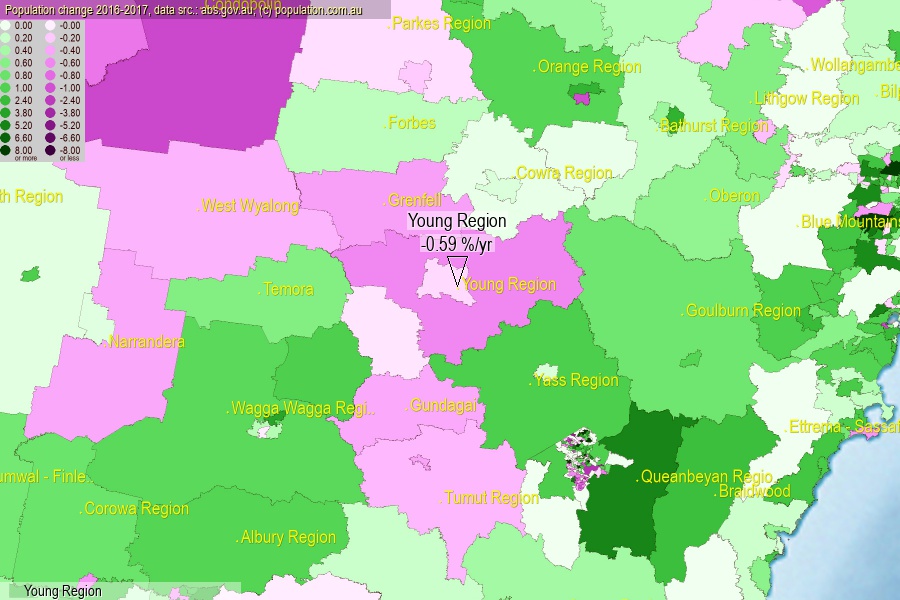 population.com.au
population.com.auLast official estimated population of Young Region (as Statistical Area Level 2) was 7 352 people (on 2017-06-30)[2]. This was 0.03% of total Australian population and 0.092% of NSW population. Area of Young Region is 5 849.80 km², in this year population density was 1.26 p/km² . If population growth rate would be same as in period 2016-2017 (-0.59%/yr), Young Region population in 2025 would be 7 009. [0]



Click to enlarge. Young Region is located in the center of the images.
Population [people], population density [p./km²] and population change [%/year] [2]
View borders » (new window) [4]
[2001-2002] -1.17 %/Yr.
[2002-2003] -0.63 %/Yr.
[2003-2004] -0.64 %/Yr.
[2004-2005] -0.41 %/Yr.
[2005-2006] -0.05 %/Yr.
[2006-2007] -0.52 %/Yr.
[2007-2008] +0.22 %/Yr.
[2008-2009] +0.61 %/Yr.
[2009-2010] +1.30 %/Yr.
[2010-2011] +0.86 %/Yr.
[2011-2012] -0.50 %/Yr.
[2012-2013] -0.67 %/Yr.
[2013-2014] -0.56 %/Yr.
[2014-2015] -0.64 %/Yr.
[2015-2016] -0.64 %/Yr.
[2016-2017] -0.59 %/Yr.
[0] Calculated with linear interpolation from officially estimated population
[1] Read more about SA2 and Australian Statistical Geography Standard (ASGS) on abs.gov.au
[2] Population data from Australian Bureau of Statistics (Population and density: 2017; change: 2016-2017)
[3] Digital Boundaries: Australian Statistical Geography Standard (ASGS) 2016.
[4] Border coordinates are simplifyed using Ramer-Douglas-Peucker algorithm.